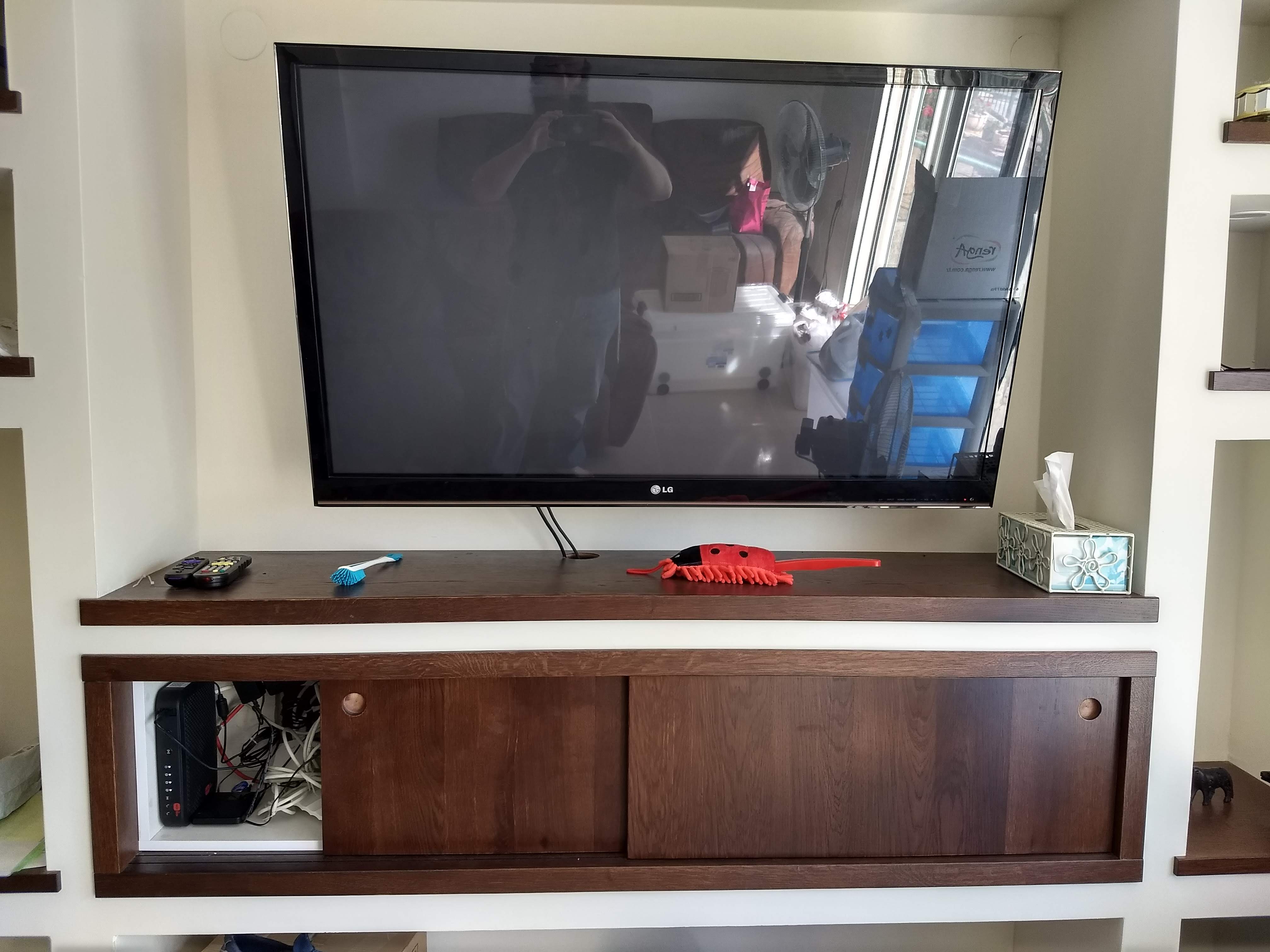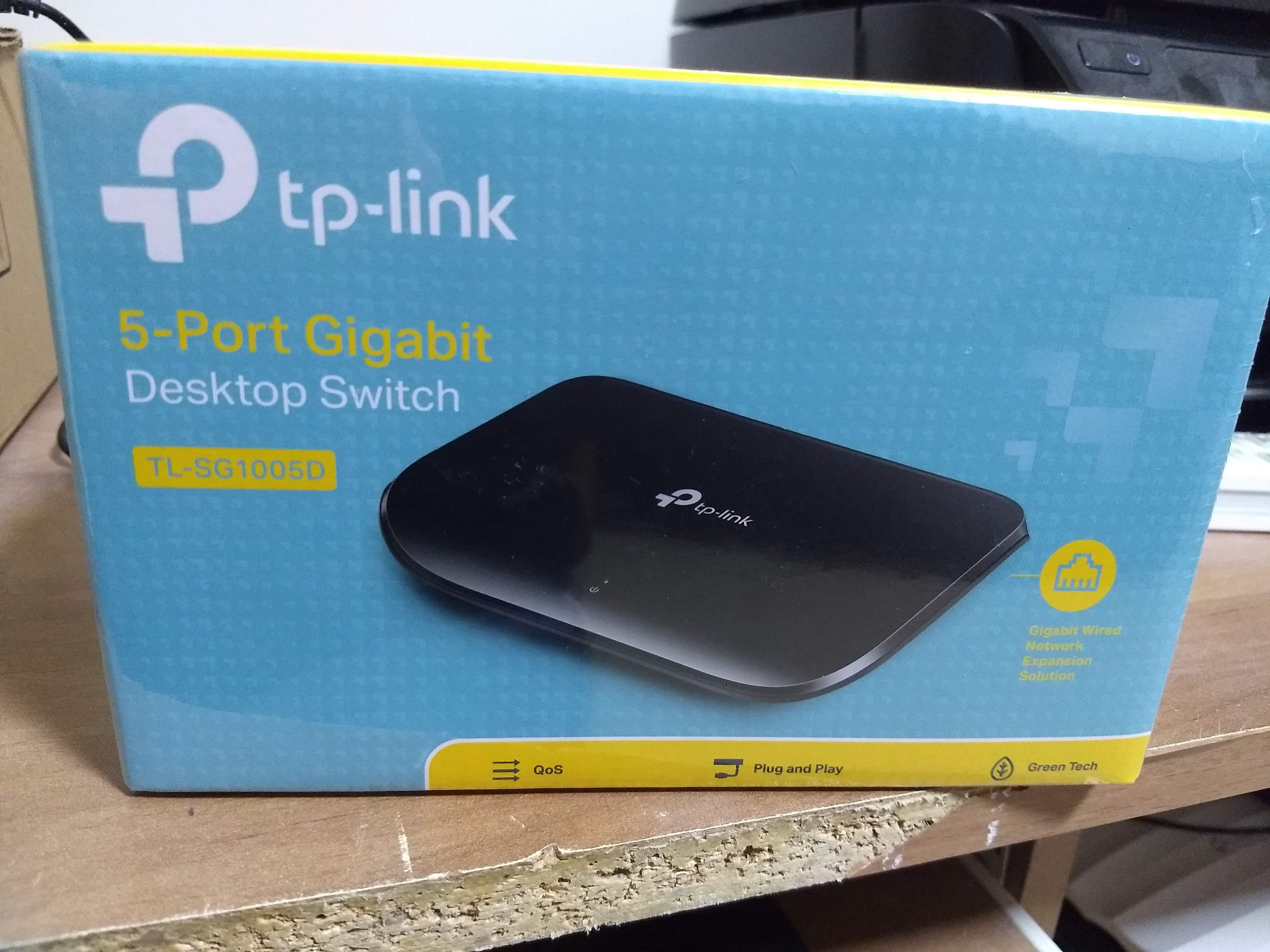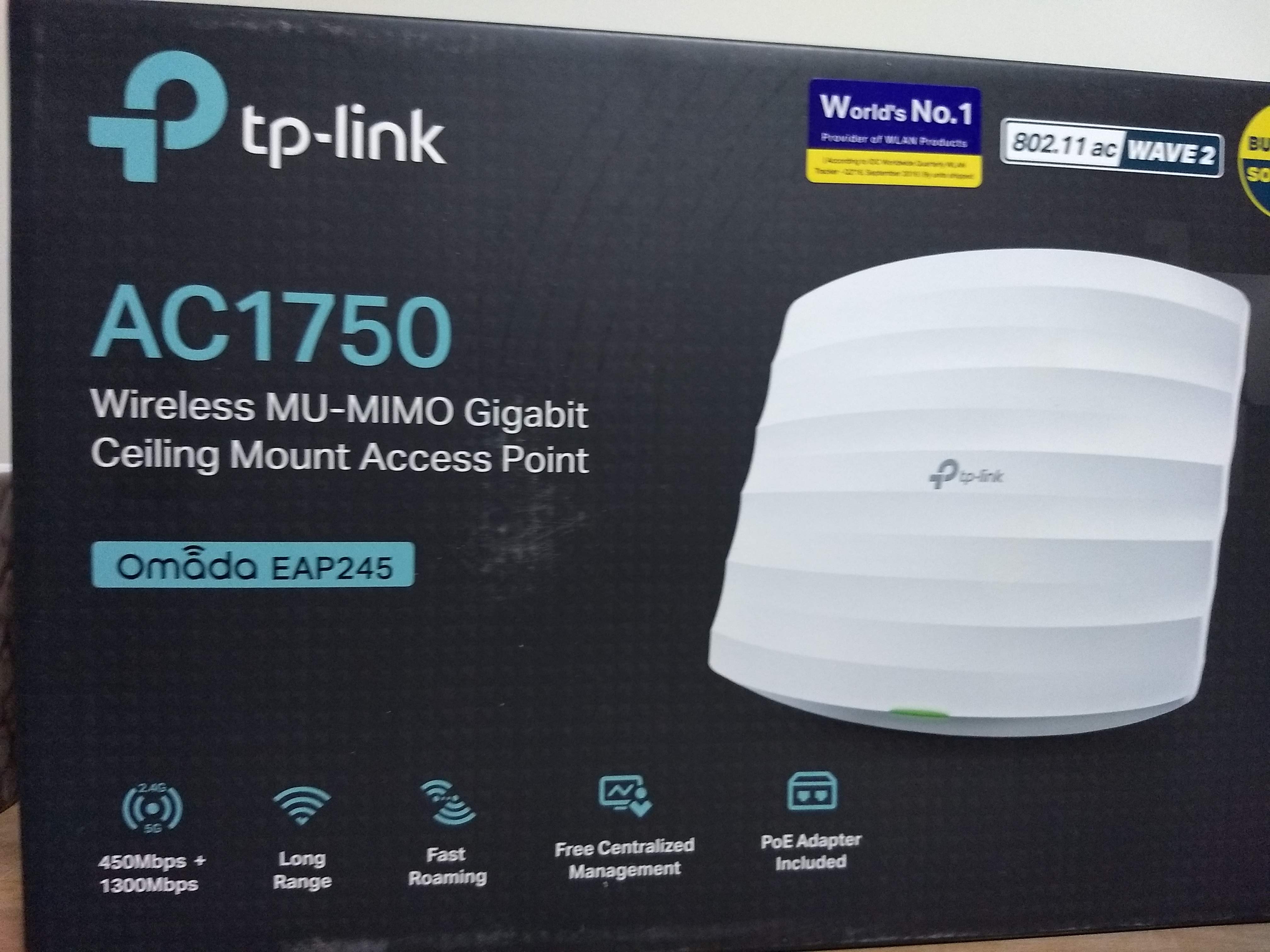See a typo? Have a suggestion? Edit this page on Github
I didn't mention it on this blog, and I think not even on Twitter. But back in October of 2018, we started a major renovation project on our house. The project ended up taking seven months, and we just moved back in two weeks ago. Two special thanks are in order:
- A big thank you to Miriam, who moved us back home while I was off at LambdaConf for a week
- A big thank you to my parents for letting Miriam and me, plus four children, invade their house for seven months straight
Anyway, most of the changes we were attempting are fairly straightforward, non-technical, and (besides to those of us living in the house) uninteresting. Things like replacing leaking pipes, adding insulation to the walls so we don't freeze in the winter, and so on.
But this work also include a major change to how our home network works. I'm far from an expert on anything hardware related, including wired networking and wireless devices. This process involved a lot of investigation on my part, and trying to plan out choices many months in advance. I consulted with friends, especially coworkers at FP Complete who are more knowledgeable about this stuff than me. So far, I'm very happy with the end result.
I'm writing up this blog post for people who are curious about how this setup ended up looking, and in case it may help others make some decisions.
Requirements
Something about my house: it's tall. We live on the side of a mountain, and so we have 4 split levels. This makes it difficult to get a good WiFi signal across the whole house. Originally, before the renovation, I bought a D-Link COVR 1203 set of devices (1 router, 2 access points). These devices work with a wireless backhaul, meaning they communicate with each other over a wireless as opposed to a wired connection. This worked, but we always had deadspots in the top level, and much degraded speed. So we wanted something better. (Those devices are now living happily at my parents' house, and were a lifesaver for surviving there for the past seven months.)
Anyway, here's a breakdown of what we need:
- First and foremost, the majority of my work revolves around voice and video calls. I need a 100% reliable connection for that, otherwise I have major disruptions in my ability to do my job. I have an office on the second floor, but also sometimes need to work from our bedroom on the fourth floor when we have guests staying with us. For me, both wired and wireless connections are an option.
- We have a TV in the living room on the first floor, previously connected to a Chromecast, now connected to a Roku. (I strongly recommend Roku devices, we've been really happy with this one.) We stream on this Roku, and it needs a solid signal. We had a lot of frustration with flaky wireless to the Chromecast before.
- Beyond those key points, we overall want solid wireless throughout the house, which probably isn't too much of a surprise. It's not a hard requirement to be able to use WiFi everywhere in the house, but it's nice to have.
- Finally, as a nice to have, we'd like to have the option in the future of getting our kids desktops in their bedrooms and setting up wired connections.
That all sounds pretty standard I'm guessing. Some things that aren't required:
- We don't have any special router requirements. All devices are OK with a standard IPv4 NAT setup. No special firewall rules are necessary.
OK, let's talk about what we did.
Modem and router
We set up both phone line and cable line jacks in the living room right by the TV. This area is our entertainment center, with the TV, Roku, and Nintendo Switch. So adding in a modem was natural. We went with the cable company HOT. I really dislike the company... but what can you do, every company in this space seems to suck.

They gave us what they call a Hot Box (heh), which is a pretty standard modem + router + WiFi access point combo. For those not familiar with the distinction between these:
- A modem converts an analog signal (like a television cable line) to a network signal. It allows a single device on each end of the line to talk to each other.
- A router allows multiple devices on a local area network to connect to a wide area network (usually the internet). It performs tasks like a DHCP server, network address translation (NAT), and firewalling.
- A wireless access point allows devices to connect to a network over WiFi instead of over a wired connection.
The wireless access point in the Hot Box was terrible: it was slow to connect and used an old wireless standard (more on that later). I disabled that feature. However, since I didn't have advanced rotuer needs, we're using the router capabilities of the Hot Box.
Cables in the walls
The magic of all of this is, now that we were doing construction, we had a chance to run network cables through all of the walls of the house. Our electrician ran three CAT6 cables through the house: one to my office on the second floor, one to one of the kids' bedrooms on the third floor, and one to our bedroom on the fourth floor. All of the cables originate in the same cabinet holding the Hot Box.
The Hot Box provides four network jacks. As you'll see, we have more than four devices in the house that want a wired connection. So the next addition to this show is...
Network switches
A network switch is a device which allows multiple devices to connect, and will route packets between them intelligently. For our purposes, a switch allows us to make one connection to the Hot Box, and then plug in multiple devices to its other ports, resulting all connected devices having an internet connection.
We purchased TP-Link 5-port switches. The reason for this choice was a combination of reading reviews, price, and availability of the product in Israel. I'm happy with them, and have no complaints at all, but have no reason to believe them to be qualitatively better than other devices on the market.

By adding a switch next to the Hot Box itself, we ended up with 4 + 5 = 9 ports. However, connecting the two devices uses a port on each device, so we had seven usable ports. Each of the CAT6 cables to the other three floors got their own port. The Roku gets a port. The Nintendo Switch (naming here is really confusing) will ultimately get a port, once we buy an ethernet adapter for it. And as we'll see in the next section, the wireless access point gets one too.
In my office, I put in a network switch as well, since I'll be connecting more than one device on a wired connection in here. Similarly, in the kids room, I put in another network switch. From the one bedroom, we have a network cable running into a second bedroom, so that both rooms end up with a wired connection without having to run two cables through the walls of the house.
I'm honestly not convinced I made a great decision on this, and perhaps running extra cables and buying a single, larger switch for the living room would have been smarter. But this definitely works.
With this much of the setup, we now have the ability to have a wired, stable, fast connection for my laptop in our bedroom, for a proper workstation in my office, for the kids' computers in the future, for streaming videos on our Roku, and for playing Nintendo Switch games online. (I still have to have my brother over to test out Fortnite at some point.) But there's no wireless connection yet, so...
Wireless access points
This is the area I least understood before starting this project. I still won't claim to be an expert, and I'll be happy to modify this section if people have corrections (or just send a PR using the link above). But here's what I've learned.
The basics of a wireless access point (WAP) are simple. They provide wireless devices with something to talk to wirelessly. They then route packets from those devices to others. Arguably the simplest kind of WAP will have a wired connection to a router or switch, and provides a bridge between the wired and wireless connections. Other kinds of access points work differently, such as by connecting to some other WAP for the internet signal. (This is what my COVR devices with wireless backhaul did, for instance.)
I did not want to deal with a wireless backhaul, since it has multiple limitations. Firstly, the effective speed is cut in half, since half the wireless bandwidth needs to be used to talk to the source signal. Also, The devices need to be close enough together to talk, which is a problem with our house. And as you'll see shortly, with the distances in my house, this would drastically degrade the speed.
So instead, the goal with this renovation was to have a WAP with a wired connection on each floor, which would provide complete house coverage and no issues with degraded signal due to distance between the devices. Having determined the kind of device to look for, I started researching the topic.
The next thing I learned—which I'm sure many readers already knew—was about the difference between the 2.4Ghz and 5Ghz bands. Successive wireless standards, like 802.11n vs 802.11ac, have added the ability to communicate over 5Ghz instead of 2.4Ghz. 2.4Ghz is advantageous in that it can work over longer distances and more easily penetrate obstacles like walls. By contrast, 5Ghz offers faster speeds. Given that distance was hopefully no longer going to be an issue, getting devices with support for 802.11ac was advantageous.
With the same review process and criterion as I used for the network switches, I ended up choosing the TP-Link EAP245. This is a business class solution, and likely overpowered for our needs, but I'd rather get this set up once and not have to think about it again for years. This requires more tweaking than the network switches, but the interface was pleasant to use and the mobile application intuitive.

So far, everything's been great with these devices. I've done signal checks throughout the house, and everywhere I've checked we have well above 80% signal (usually closer to 95%) on the 5Ghz band. A speed test in my bedroom topped out at 195Mbps, over a cable line providing a maximum of 200Mbps. So I think it's fair to say that the wireless signal is no longer the bottleneck in the house. In fact, I also tested the network speed using a cheap WiFi dongle I bought years back, and it was significantly slower than the wireless connection.
These devices include some features that are either really great or awesome snake oil. "Fast roaming" means that, for client devices that support it, there will be a seamless transition between two of the access points when moving through the house. This can be great in theory, but I haven't tested it in practice yet.
I set up the devices to use the same SSID for both the 2.4Ghz and 5Ghz bands. I read conflicting information on whether this was a good idea or not. The advantage for me is simpler configuration of devices (no need to tell guests which network to use), and in theory devices will automatically switch between 2.4Ghz and 5Ghz depending on how far they are from the respective signals.
It's been a complete pleasure having reliable WiFi on all our devices throughout the house.
Power over Ethernet
As a side note, the WAPs do not have a power port. They have two network ports only: an incoming port for the internet signal and power, and an outgoing port for sharing a signal with another device if desired. I was unfamiliar with Power over Ethernet (PoE) before this project, but it's pretty nifty. In our bedroom, it means the WAP has just a single cable going into it from the wall, with the PoE injector living downstairs next to the Hot Box itself.
Network attached storage
This was a nice little perk I hadn't expected. We have a portable USB hard drive with movies and music, which we connect to our Roku. Any time we want to transfer files, we unplug it, bring it to one of our computers, plug it in, do the transfers, and then reconnect it to the Roku. I feel like an absolute caveman doing this!
Now that our in-house bandwidth is so high, we started playing with the idea of buying a Network Attached Storage (NAS) device so that the Roku could stream off of it over the network, and we could transfer files to it from our computers. However, to my surprise, the Hot Box itself has such capabilities: I plugged the USB hard drive into the Hot Box's USB port, and was immediately able to access the drive from both the Roku and our laptops. This was a great little perk, and being able to watch movies or listen to music from multiple devices at once is awesome.
Cost
I don't have all the figures at my disposal, but overall, the costs involved in this setup were:
- Network switches and WAPs: about $612. I ended up buying extra devices due to a sale at the company I purchased from, and ended up with 5 of each, even though I only needed 3 switches and 4 WAPs. Happy to have the backups.
- Since we were already doing renovations and fixing lots of electrical work in the house, running the three CAT6 cables wasn't a major expense. I think it was order-of-magnitude less than $200 total.
- Additional network cables for connecting the switches to each other, the PoE injectors to the switches, and the WAPs to the PoE injectors, cost me around $60. This turned out to be many more cables than I was expecting, and I cleaned out the local hardware store of their 1 meter cables. Twice.
Considering how vital all of this is to my job, that's an easily absorbable cost. And the joy of never fighting with a flaky Chromecast again are well worth it!
Problems
Most everything went off without a hitch. Ultimately, I think I asked the electrician to put the network jack in our bedroom in the wrong location. Now that we're using it just for the WAP, having it higher on the wall would have been less intrusive. I'm also pretty terrible at making jumbles of cables look nice, so there's still some cleanup in my office and the kids' rooms to make it presentable.
Conclusion
I planned out all of this towards the beginning of our construction. I then got to wait around for seven months to see if the plans were going to work out in practice correctly. It's a huge relief to find out that it did.
I would strongly recommend that anyone doing serious renovations consider running network cables through their walls at the same time. And certainly, for any new construction, make sure you include network cables along with power lines.
If I discover any problems or improvements, I'll try to blog about them too.
I hope people found this useful, or at least interesting.